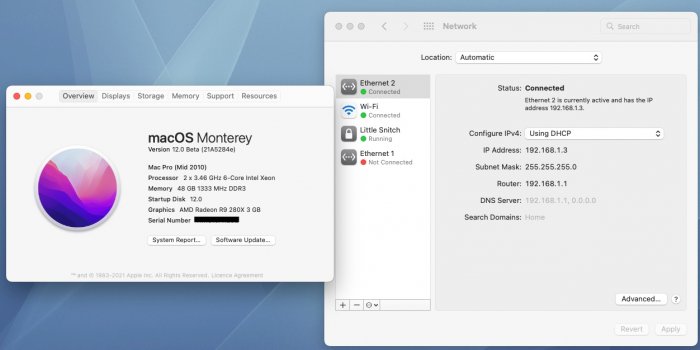My cMP 5,1 has been a very stubborn beast and, as posted twice before, I've had little repeatable success (with 0.17)...up until now!! I'm pleased to finally report that latebloom v.0.19, with OCLP 0.23, and installing and multiple rebooting of Monterey beta 3 is looking pretty stable and successful...so far. I've skipped over 11.3/4/5 for now (keeping 11.2.3 as my daily OS).
LB settings used: latebloom=220 lb_range=20 lb_debug=1
Other boot-args: keepsyms=1 debug=0x100 -lilubetaall -v amfi_get_out_of_my_way=1 -no_compat_check
My hardware is in my signature. I can edit/provide in a fuller list if required. The only things missing to make Monterey a future regular OS is internal BT 4.2, off an upgrade BCM943602CDP card, not working and neither are both Ethernet ports. With the latter, there appear to be a couple of incompatible lines of code in the IONetwork cache support files. Maybe someone will add a workaround to OCLP at some stage. In the meantime, I'm buying a cheap USB3 Gigabit Ethernet adapter to get back up to speed, and may add a USB BT dongle if I have to, for Airdrop etc, as well.
Thank you Syncretic and any other developers/testers!!
UPDATE: Well, wouldn't you know...my 2 Ethernet ports just started working [under 12.0b3], so I don't need the adapter I just bought :-( Maybe I just needed to reboot a few more times with latebloom doing its work. While I'm peeved about the wasted purchase, it's great that (just maybe) latebloom can force the hardware to start talking again, which in turn updates the various kext and plist strings needed to get the devices to be recognised, as they were pre-11.3.


